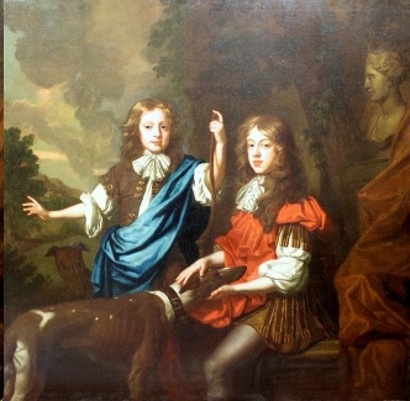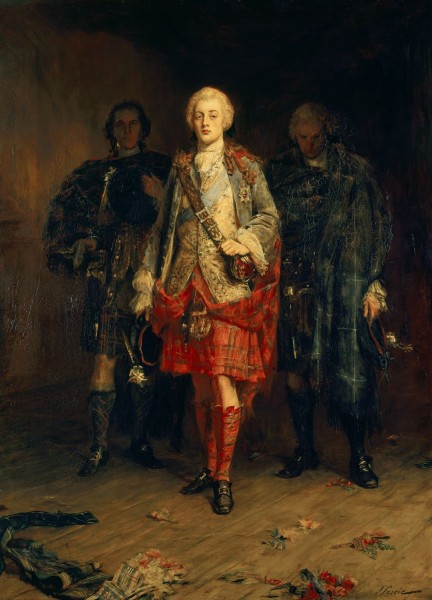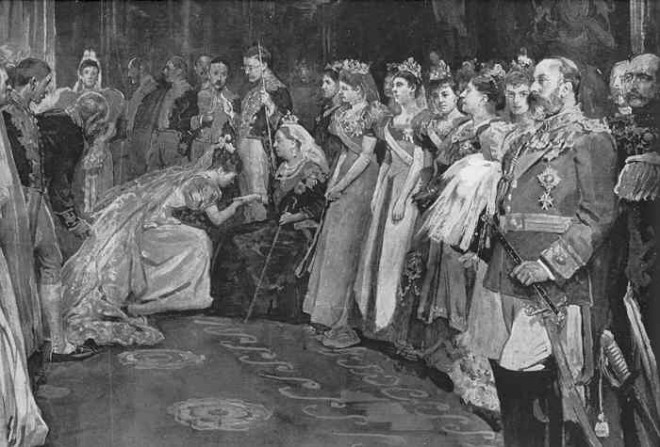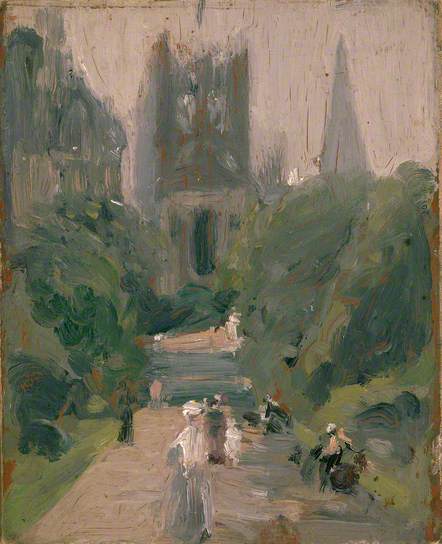‘May we go up and see the house?’: a ghost story opening to a bitter-sweet fairy story, in which the rags to riches trajectory is reversed, and the heroine lives happily but at a terrible price.

It is the summer of 1935. A young English couple with an American friend arrive at the gates of a fine, apparently uninhabited, eighteenth century house on the shores of Fife, not far from Edinburgh. Before the echoes of their knocking have died away, in true fairy-story fashion the door is opened by a tiny figure in a black dress, who asks no questions. While the two men admire the architecture of Keepsfield, the interiors, the fine furniture, the paintings, Helen Dacre hangs on the enigmatic caretaker’s stories of the absent Countess of Lochlule, to whom the house belongs. Helen is entranced, quite literally. Questions spring from her mouth which she had not thought of asking: the mysterious Mrs Memmary seems somehow to be prompting her. A ‘chance’ (or is it?) encounter with a woman of a different era, has enabled Mrs Memmary, with the help of an anthropomorphised figure of Time (this is a fairy story), to recount the life of Lady Rose, fully and for the first time – or so we are inclined to believe.

The more Helen learns about the Countess, Lady Rose, the more probing her questions become, and the better she is able to anticipate the answers. She watches Mrs Memmary, she listens and, most importantly, she feels, so that when the story of Lady Rose’s life reaches its pivotal point, she knows that there will be no ‘happy ever after’ dénouement. ‘It should have been like that – but from your face I see – I feel – it was different. You’re going to tell me that something dreadful happened!’ ‘It was dreadful,’ replies Mrs Memmary, ‘because of those days she lived in.’ The italics are mine.
Lady Rose’s story opens in 1861, her sixth birthday. ‘She was the happiest little girl in Scotland’, and one of the richest. She has big, bonny Nanny and a devoted governess. Her birthday breakfast is served to her by the schoolroom maid and an under-footman. Her birthday dress is of the softest grey merino with a wide rose-coloured sash, and her presents six gold sovereigns, and a pony and trap. When she demands an apple and sugar for her pony, these are brought by a footman, on a silver salver, with a silver knife, and a silver bowl. So far so fairy-story, and every little girl’s dream (Ruby Ferguson would later write very successfully for children – I was a devotee of her ‘pony books). Only the adult reader pauses for thought. Was this perhaps the same footman who had to enquire for her if Papa had time to see her before leaving for London to see the Queen, Rose’s Mama’s plans for the day being to complete her embroidery and visit a friend in Edinburgh?
We are in the age and the social stratum (and literary genre) where the presence of a loving mother and father was not thought to be a prerequisite of a ‘happy’ childhood. If Mrs Memmary sounds a little wistful when asked if the Earl and Countess of Lochlule later missed their daughter when they had sent her away to school, replying, ‘I can’t say that, but she wrote to her Mamma very often’, there is no hint of criticism. And, though she did not like her teachers and failed at most lessons, plucky Lady Rose made good friends at school, her absent parents sent her lavish presents and generous amounts of pocket money, and she could be confident that when buttons were in fashion her dress would have the most, and then when cakes were delivered to the girls, hers would be the biggest. Bizarre as it seems to post-Freudian generations, Rose’s childhood is not an unhappy one.
As a child she could from time to time roam beyond the castle walls – one unaccompanied walk leads to a charming beach encounter with Charles Kingsley and a lifelong love for The Water Babies. School had rules, but she was grand enough to stand up to them. As they approach their first ‘season’ she and her friends can begin to entertain fantasies of married life, ‘a kind of ideal and undefined state when you lived blissfully under another name, and had your own carriage and didn’t have to ask permission from Mamma when you wanted to go out.’ They do not notice how gradually in fact their little freedoms are being eroded. As Rose and her friends grow up, the clouds are gathering.

‘Bonnie Prince Charlie’ John Pettie. Royal Collection.
For an eighteen-year old girl of the upper classes in the 1870s there was no future without marriage, and outside the pages of novels, which Rose’s aunt would have her stopped from reading, bliss was very far from guaranteed, freedom a chimera. Unmarried after three seasons a girl could be assumed to be ‘on the shelf’, and her parents could no longer pretend to have any control over her. Daughters were to be ‘disposed of’ as swiftly as possible, like an unwanted litter of puppies’.
And the mothers know it. They too have been disposed of, and many of them will have spent years in a loveless marriage, love, as Rose’s aunt (the same aunt) so bluntly puts it, being ‘an emotion to be enjoyed only by the middle classes’. Perhaps still only in their thirties, the mothers find themselves on the chaperones’ chairs ensuring that their daughters make the right impression. ‘People are watching you,’ warns the Countess. A girl’s reputation hangs on a slender thread. Once their daughters are ‘out’ (what a curious but telling word), the mothers cannot protect them from society’s strictures. Young Rose does not challenge the conventions. Therein lie the seeds of her tragedy.

The idyll of childhood, which makes the first part of the novel so enchanting, as full of froth as the carriage carrying Rose and her friends to their first ball, where every inch ‘foamed with their billowing dresses’, is over. A marriage has been arranged. Poor Rose, only her future husband’s Aunt Katy expresses any sympathy, ‘she doesn’t know what love is. Hope to God she never will’ (what shadow, we wonder, lies in Katy’s past? Did she at some point slip her leash?). But Rose is stoical, and her obedience is unquestioning. ‘I have to get married; and he’s a Scot and Redlace is so near, and everybody seems pleased and so am I.’
Redlace is her husband’s home, but as a result of the Earl’s untimely death, and the peculiarity of Scottish inheritance laws, Rose will never live there. As the heiress to the title and to her father’s estate, she remains at her beloved Keepsfield, where her husband, to his chagrin, must join her. What might have brought her rare status for a woman in the nineteenth century, have given her a measure of equality within her marriage, does nothing of the sort. ‘“I don’t think Sir Hector ever quite forgave Queen Victoria”, said Mrs Memmary.’ But Helen’s suggestion that Sir Hector might have displayed ‘a sense of ranklement’ is summarily dismissed, ‘People of position would rather have died than reveal to the common public that there was anything wrong in their domestic relations.’
How different reflects Helen from couples of her day, and of her class, who ‘expect everything in marriage, and if we don’t get it we announce our dissatisfaction in no uncertain terms.’ The lives of the two women differ in almost every possible way. Helen’s middle-class but austere upbringing, her University education, intellectual friends and marriage of equals are in stark contrast to those of Lady Rose. What they have in common is their respective lack of knowledge of a world outside their own. If the young Rose knows anything (at all) of middle class life, or Helen of the upper classes, it is from books. Ruby Ferguson reminds us that we all have our blind spots, that it can be unwise to pass judgement too swiftly.
She is clear, nevertheless, on the need for women to embrace freedom where they can, and speaks through Rose’s delightful friend Susan, still single at 29 – ‘they couldn’t get anyone to marry me’ – who fiercely believes that women should be free to do the same things as men, and be doctors and lawyers and financiers. For her own part Susan has managed little on the feminist front apart from reading the newspapers and riding astride, and her one dream for herself is limited, ‘to belong to the middle-classes. They fall in love, and marry who they like, and become nurses, and write books.’ Ironically that is also unachievable. Social barrier read ‘no entry’ on both sides. When Lady Rose herself does break through, the consequences (I am trying to avoid spoilers!) go far, far beyond a simple breach in the fence. She must face what Ruby Ferguson brilliantly summarises as ‘the accumulated horror of social remonstrance’.

‘Princes Street Gardens’ c. 1900 by John Ferguson. Perth and Kinross Council
Ghost story, fairy story, stark realism, deeply felt but subtly expressed feminism, tragedy as well as occasional sharp humour, Lady Rose and Mrs Memmary contains all of these, wrapped in a page-turning narrative studded with unexpected twists, and lyrical descriptions of Scotland. No wonder the Queen Mother admired it so.